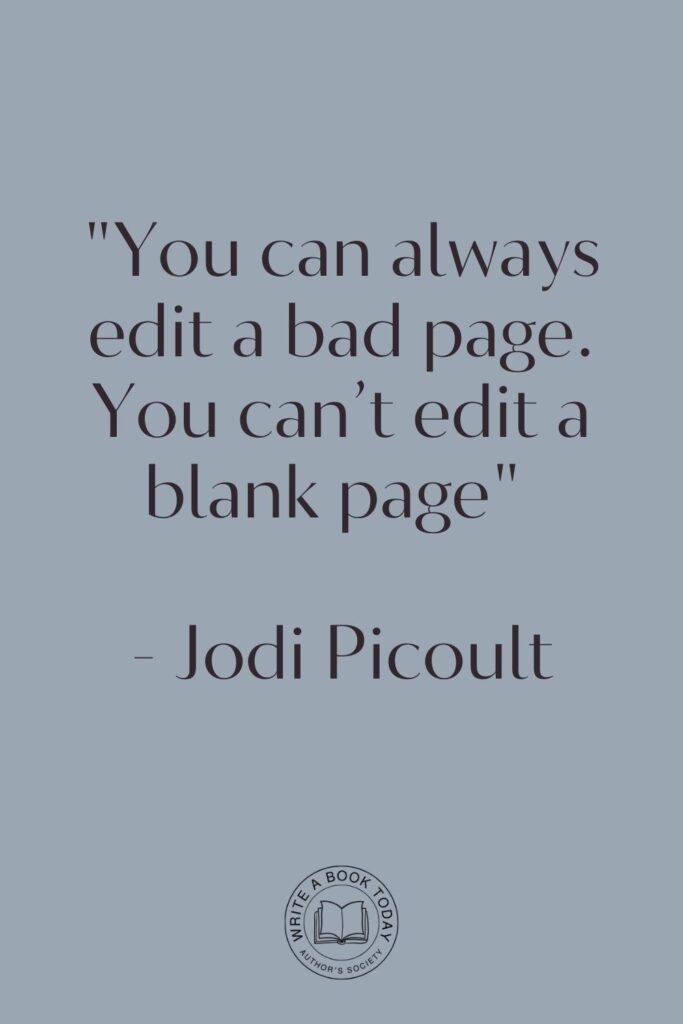Imagine a world where each page you turn is a doorway to an entirely new universe, a standalone novel that captures your heart and refuses to let go. Writing such a book is akin to weaving a tapestry of words that not only entertain but also leave a lasting impression.
As a writer, your quest is to create a self-contained story that satisfies readers, offering them a complete journey within the confines of a single book. This guide will walk you through the essential elements needed to craft a standalone novel that resonates deeply and leaves your readers utterly satisfied.
Understanding the Essence of a Standalone Novel
A standalone novel is a singular entity, a narrative that stands firm on its own without the need for sequels or prequels to complete its story. It demands a robust narrative arc and a well-defined core message.
Unlike series where stories are spread over multiple books, a standalone novel must encapsulate all its themes, character development, and plot resolution within its pages, offering a complete experience to its readers.
The Importance of a Satisfying Narrative Arc
The narrative arc in a standalone novel is its backbone, guiding readers through a journey that feels complete and fulfilling. This arc should begin with an engaging introduction, build tension through rising action, reach a climax that keeps readers on the edge of their seats, and conclude with a resolution that ties up loose ends.
A satisfying narrative arc is crucial because it ensures that readers are not left hanging, wondering about unresolved storylines or character fates.
To achieve this, consider the classic story arc which includes an exposition, rising action, climax, falling action, and resolution. Each phase should be meticulously crafted to maintain reader interest and provide a sense of closure by the end of the book.
Defining Your Novel’s Core Message
Every great standalone novel has a core message or theme that resonates with its audience. This message acts as the novel’s heartbeat, the underlying truth or question that the story seeks to explore.
Whether it’s the triumph of love, the struggle for identity, or the quest for justice, this theme should be woven throughout the narrative, giving readers something meaningful to ponder long after they’ve turned the last page.
Identify the central theme of your novel early in the writing process. This will help you stay focused and ensure that every scene contributes to the overall message. A well-defined theme can also make your novel more memorable and impactful.
No marketing platform? No social following? No problem!
Publisher Rocket helps you market your debut novel like a pro.
It’s a gamechanger for debut authors – try it today!


Crafting Compelling Characters
Characters are the soul of any story, breathing life into the words on the page. In a standalone novel, your characters must be well-developed and relatable, as they are the ones who will guide your readers through the narrative journey.
From protagonists to antagonists, each character should have depth and complexity, driving the story forward with their actions and decisions.
Character Development Techniques
Developing compelling characters requires attention to detail and a deep understanding of human nature.
Consider using character arcs to show growth or change over the course of the story. This involves setting up a character’s initial state, presenting challenges that test them, and illustrating how they evolve in response to these challenges.
Additionally, crafting detailed backstories and motivations will make your characters more believable and relatable. These backstories don’t always have to be explicitly stated in the novel but should inform how your characters behave and interact with the world around them.

Creating Relatable Motivations
For readers to invest in your characters, their motivations must be clear and relatable.
Whether driven by love, revenge, ambition, or fear, these motivations should align with the character’s personality and experiences. Consider how these motivations influence their decisions and how they might conflict with other characters’ goals.
When crafting character motivations, think about the universal themes that resonate with readers. Relatable motivations, such as the desire for acceptance or the fear of failure, can make your characters more accessible and your story more engaging.
Building Dynamic Relationships
Relationships between characters add layers of intrigue and emotional depth to your novel. Whether it’s a budding romance, a tense rivalry, or a steadfast friendship, these dynamics should evolve naturally throughout the story.
The interactions between characters can serve as pivotal moments that advance the plot and reveal deeper aspects of their personalities.
Consider how relationships can be used to challenge characters, forcing them to confront their beliefs and grow as individuals. Well-crafted relationships add richness to the narrative, making it more engaging and relatable for readers.
Plot Structure That Captivates
The structure of your plot is the skeleton that supports your story, ensuring that it flows logically and maintains reader interest. A well-structured plot is essential for a standalone novel, as it must convey a complete story arc within a limited number of pages.
The Three-Act Structure Explained
The three-act structure is a tried-and-true method for organizing a novel’s plot. It divides the story into three parts: the setup, the confrontation, and the resolution.
The first act introduces the characters and setting, establishing the stakes and inciting incident. The second act involves the protagonist facing obstacles and conflicts, building tension and complexity. Finally, the third act brings the story to a climax and resolves the central conflict.
Use the three-act structure as a flexible guide rather than a strict formula. Allow room for creativity and unexpected twists, while ensuring that each act serves its purpose in the overall narrative.

Plot Twists and Turns
Plot twists can be a powerful tool to keep readers engaged and surprised. These unexpected turns in the story should be carefully planned and foreshadowed to maintain believability.
A well-executed plot twist can add depth to your narrative, challenging readers’ assumptions and keeping them on their toes.
Consider how plot twists can reveal hidden truths about characters or alter the course of the story. When done right, these surprises can enhance the emotional impact of your novel and leave readers thinking long after they’ve finished the book.
Pacing Your Story Effectively
Pacing is critical in a standalone novel, as it determines the rhythm and flow of the story. A well-paced novel balances moments of tension with periods of reflection, ensuring that readers remain engaged without feeling overwhelmed.
Consider varying the pace throughout the story, using shorter, action-packed scenes to build excitement and longer, introspective passages to develop character depth.
| Element | Purpose |
|---|---|
| Fast-paced scenes | Increase tension and excitement |
| Slow-paced scenes | Develop characters and themes |
| Balanced pacing | Maintain reader interest |
Engaging Your Readers from Start to Finish
Capturing your readers’ attention from the very first sentence and holding it until the final word is a hallmark of a successful standalone novel. Every element of your story, from the opening scene to the climax, should be crafted with care to ensure an immersive and satisfying reading experience.
Feeling lost with your debut novel?
Fiverr Pro connects you with expert editors, designers, and marketers – everything you need to get your book ready for success!

Creating a Gripping Opening Scene
The opening scene is your chance to hook readers and draw them into your story. It should introduce the main characters and setting while hinting at the central conflict or theme. Consider starting with an intriguing question or a dramatic event that sets the tone for the rest of the novel.
Remember, the opening scene sets expectations for the entire book, so make it memorable and engaging. A strong beginning can entice readers to keep turning the pages, eager to discover what happens next.
Maintaining Tension Throughout the Novel
Tension is the lifeblood of a gripping narrative, keeping readers invested in the story’s outcome. To maintain tension, introduce obstacles and conflicts that challenge your characters and raise the stakes. These challenges should escalate as the story progresses, leading to a climax that feels both inevitable and surprising.
Use subplots and secondary conflicts to maintain tension and add depth to your story. These additional layers can provide opportunities for character development and create a more immersive reading experience.

Delivering a Rewarding Climax and Resolution
The climax is the moment when the story’s central conflict reaches its peak, offering readers a cathartic release of tension.
This should be followed by a resolution that ties up loose ends and provides a satisfying conclusion to the narrative. In a standalone novel, the resolution is particularly important, as it leaves readers with a sense of closure and fulfillment.
Consider how the climax and resolution reflect the themes and character arcs established earlier in the novel. A well-crafted ending can leave a lasting impression, ensuring that your story resonates with readers long after they’ve finished the book.
The Joy of Revising and Polishing Your Work
Revising and polishing your manuscript is an essential step in the writing process, transforming a rough draft into a polished gem. This stage allows you to refine your prose, strengthen your plot, and deepen your characters, ensuring that your standalone novel is the best it can be.
Embracing Feedback for Growth
Feedback from beta readers, critique partners, or editors can provide valuable insights into your novel’s strengths and weaknesses.
Embrace constructive criticism as an opportunity for growth, using it to identify areas for improvement and enhance your story. Remember, even the most accomplished authors benefit from fresh perspectives.
When incorporating feedback, consider how suggested changes align with your vision for the novel. Use your judgment to determine which revisions will strengthen the narrative and resonate with your intended audience.
Google Docs is for notes. Scrivener is for novels. Upgrade your writing game and try it for free today!

Final Touches: Editing and Proofreading Tips
Editing and proofreading are crucial for ensuring your manuscript is free from errors and inconsistencies. Review your story for structural issues, such as plot holes or pacing problems. Once the big picture is in place, focus on line editing to improve clarity, style, and coherence.
- Check for grammar and spelling errors.
- Ensure consistency in character names and settings.
- Refine dialogue to make it natural and engaging.
Take breaks between editing sessions to approach your work with fresh eyes. This can help you spot errors and inconsistencies that you might have missed otherwise.

Celebrating Your Finished Standalone Novel
Completing a standalone novel is a significant achievement, worthy of celebration. As you prepare to share your story with the world, take pride in the hard work and creativity that brought your vision to life.
Sharing Your Story with the World
Once your novel is polished and ready for publication, consider your options for sharing it with readers. Whether you choose traditional publishing, self-publishing, or digital platforms, each avenue offers unique opportunities and challenges.
Research your options and select the path that aligns with your goals and values as an author.
Promoting your novel through social media, author events, or book signings can help you connect with potential readers and build excitement for your story. Remember, sharing your novel is an opportunity to engage with others who appreciate your work and the effort you put into creating it.
Finding Your Audience and Building a Community
Connecting with readers who resonate with your novel is a rewarding aspect of being an author. Engage with your audience through online forums, book clubs, or social media platforms, fostering a sense of community among those who share your passion for storytelling.
Building a loyal readership takes time and dedication, but the relationships you form with your audience can be incredibly fulfilling. Embrace the opportunity to share your insights and experiences, inspiring others to embark on their own writing journeys.








